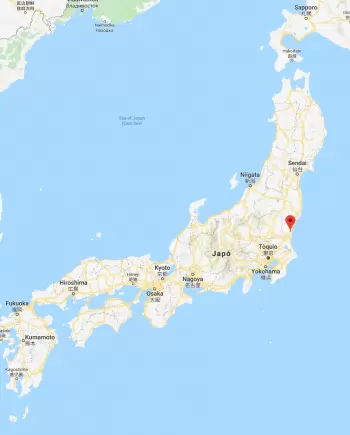
In the town of Tōkai-mura (Japan ), there were two nuclear accidents in the Japanese nuclear industry. Both accidents at the nuclear plant occurred in the ’90s: 1997 and 1999.
The uranium fuel treatment facility is in Tokaimura (Japan), 120km northeast of Tokyo, in the Ibaraki Prefecture. JCO company is currently the owner.
The principal facility's nuclear accident occurred on September 30, 1999, in the nuclear plant's conversion building.
The accident reached level 4 according to the INES scale.
How were the facilities in Tokaimura?
The facility consists of three ancillary uranium conversion buildings:
-
One with an annual capacity of 220 tons of uranium per year for low enrichment (approximately 5%).
-
Another with an annual capacity of 495 tons of uranium per year for low enrichment (less than 5%).
-
Another with an annual capacity slightly higher than 3 tons of uranium per year for high enrichment (not more than 20%).
They muted enriched uranium hexafluoride into uranium dioxide fuel
In this third building, enriched uranium hexafluoride into uranium dioxide fuel. The facility was used only for precise orders for immediate production. It was practically only in operation two months out of the year.
Enriched uranium is necessary for reaching the critical mass needed in nuclear power plants (NPP) to convert nuclear energy to electricity.
What was the cause of the significant Tokaimura accident in 1999?
The criticality accident occurred during the uranium purification procedure. The procedure was designed in such a way as to prevent reaching critical mass. In particular, the buffer capacity was made high and narrow. There was strict control over the amount of processed raw materials that it could assume.
However, three years before the accident, the plant arbitrarily changed the cleaning procedure.
The uranium oxide solution (U3O8) had to be in a tank arranged for this purpose. Afterward, it had to be transferred to a sterile uranyl nitrate solution and homogenized with a nitrogen gas purge. Finally, the mixture was poured into the water-cooled precipitation tank.
The procedure established limits for the amount of uranium that had to be transferred to the tank.
Workers now manually mixed uranium oxide and nitric acid in 10-liter stainless steel buckets rather than in a dedicated tank.
On September 30, the enterprise began processing uranium for the Joyo reactor with raw materials enriched to 18.8%. The three workers loaded seven buckets of uranyl nitrate into the sump. It was almost seven times more than the maximum allowed.
They reached the critical mass necessary to start a nuclear fission chain reaction due to the 18.8% of enrichment. As a result, the nuclear chain reactions started to emit high levels of neutron and gamma-ray.
In 2014, the Japanese government decided to establish the "Strategic Energy Plan," naming nuclear power as an essential power source.
The previous criticality event in 1997
The event occurred at 10.00 from November to March of 1997. The low radioactivity waste processing plant of the corporation Donen (Nuclear Development Corporation) was declared a fire by sounding alarms.
Few minutes later, workers used cooling water, and it seemed that the situation was under control. However, at 6:04 p.m. that day, there was an explosion that destroyed some walls and windows.


